Pulp Heroes of 1990s Past: The Shadow on Blu-ray
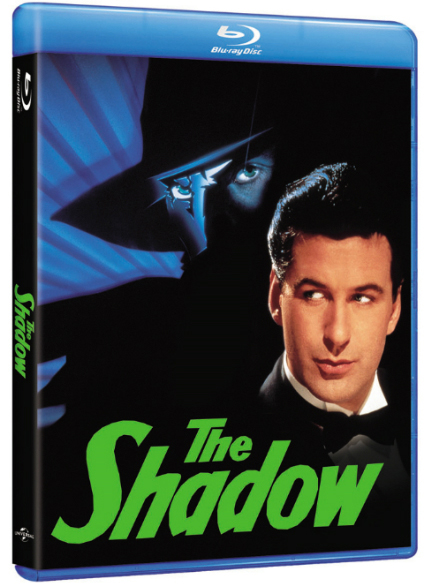 The Shadow (1994)
The Shadow (1994)
Directed by Russell Mulcahy. Starring Alec Baldwin, John Lone, Penelope Ann Miller, Peter Boyle, Ian McKellen, Jonathan Winters, Tim Curry.
The global whirlwind success of Tim Burton’s Batman in 1989 triggered a flurry of retro-hero movies. Eight years later, the gaudy nipple-suited failure of Batman and Robin brought an end to the cycle, and it wasn’t until the double-hit of X-Men (2000) and Spider-Man (2002) that our current comic book flood started. But we got a few interesting films during the retro-hero phase, such as Dick Tracy, the well-loved The Rocketeer … and the semi-forgotten The Shadow, which came out on Blu-ray this week to offer its mixture of elegance and error for a new audience.
A film about the pulp hero the Shadow was in development since 1982 under the auspices of producer Martin Bregman. Originally, Robert Zemeckis was slated for the director’s chair, but the film dwelled in limbo until Batman blew up the box-office. When Bregman was at last able to get the project going, Russell Mulcahy (Highlander) had replaced Zemeckis, and writer David Koepp (Jurassic Park) was on screenplay duty.
Universal Pictures had The Shadow pegged as a blockbuster in the summer of 1994: it received a heavy marketing push, with numerous merchandizing tie-ins and the announcement of an SNES video game. Universal even planned for a Shadow stunt show at their Hollywood theme park. But after a decent opening weekend, where it came in at #2 under The Lion King’s second monumental weekend and beat the awful Blown Away, The Shadow plummeted to become one of the summer’s disappointments. Plans for a franchise vanished into the darkness with the same skill as the Shadow himself.
I was among the Friday night crowd for the premiere of The Shadow in ‘94, and I recall the audience reacting enthusiastically; it looked as if Universal’s gambit would pay off. I felt the film was underwhelming, but I knew only as much about the character of the Shadow as most viewers did: a radio hero from the 1930s who could “cloud men’s minds” or something like that; his real name was Lamont Cranston; Orson Welles performed his voice for a while.
In the years after, my position on the Shadow evolved exponentially. I became a serious fan of the character through the original novels by his creator, Walter B. Gibson, who wrote over 282 book-length stories from 1931 to 1948 for the twice-weekly pulp The Shadow Magazine. (Yes, he wrote two novels a month. The pulp authors were titans.) But since becoming a Shadow fan, I’ve only watched the movie once, when it came out on DVD in the late 1990s. Universal’s disc presented the film in a cropped 1.33:1 aspect ratio (4:3 in today’s television jargon), which hurt appreciation of the film’s style. The new Blu-ray release is the first time since laserdisc that The Shadow has gotten released in its original 1.85:1 theatrical presentation, and the high quality of Blu-ray promised to give the film’s visuals the respect they deserve. Now was the time for a Shadow fan to revisit the big-budget attempt to make the Knight of Darkness into the next Batman franchise.
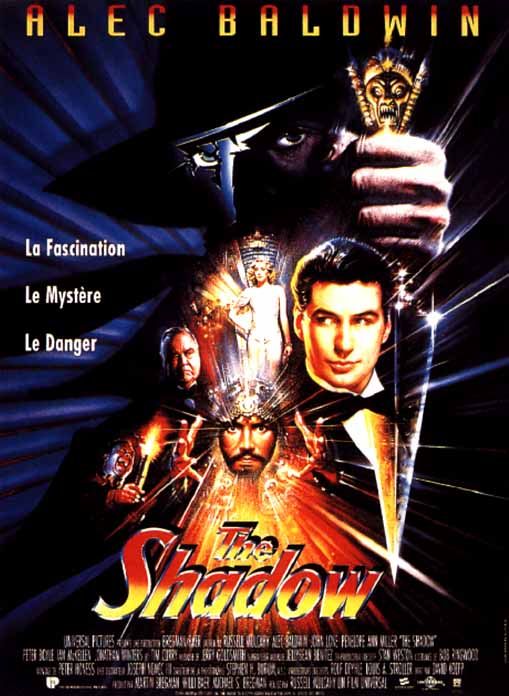 A bit of “Shadow love” goes some distance in making the film an interesting watch — but it also makes it clearer why the film never breaks out of the purgatory of a “pretty decent” film. David Koepp’s script balances between the novels and the radio shows, which on its own isn’t too damaging an idea. The Shadow has the superheroic abilities from his radio incarnation, but amplified from turning invisible by “clouding men’s minds” to full-on telepathy and Jedi “these aren’t the droids you’re looking for” mind tricks. I prefer the Shadow as a master of stealth and disguise without the need for powers — which were just a device to help the radio writers skip needing to explain how the character was managing his deceptions — but Koepp compensates by keeping many characters from the books: villain Shiwan Khan (who appeared in four of the novels, starting with The Golden Master), Moe Shrevnitz the cabbie (Peter Boyle), Dr. Roy Tam (Sab Shimono), and the Shadow’s communications controller, Burbank (Andre Gregory).
A bit of “Shadow love” goes some distance in making the film an interesting watch — but it also makes it clearer why the film never breaks out of the purgatory of a “pretty decent” film. David Koepp’s script balances between the novels and the radio shows, which on its own isn’t too damaging an idea. The Shadow has the superheroic abilities from his radio incarnation, but amplified from turning invisible by “clouding men’s minds” to full-on telepathy and Jedi “these aren’t the droids you’re looking for” mind tricks. I prefer the Shadow as a master of stealth and disguise without the need for powers — which were just a device to help the radio writers skip needing to explain how the character was managing his deceptions — but Koepp compensates by keeping many characters from the books: villain Shiwan Khan (who appeared in four of the novels, starting with The Golden Master), Moe Shrevnitz the cabbie (Peter Boyle), Dr. Roy Tam (Sab Shimono), and the Shadow’s communications controller, Burbank (Andre Gregory).
But Koepp’s script falters when he departs from both the pulps and the radio: he re-wrote the Shadow’s character to create a more contemporary view of a fallen man who struggles to become a hero. The Shadow is now a former drug lord from Tibet with a blood-soaked history. He becomes a hero through the tutelage — which we never see — of Tibetan mental-arts master the Tulku (Brady Tsurutani). As the Shadow, he fights for good to purge himself of his dark heart, his “Shadow” self, while trying to stop Jenghis Khan’s descendant Shiwan Khan (John Lone) from creating an atomic bomb and leveling New York City. It is a Hollywood hack take on the hero’s journey and it makes the Shadow a dull figure on screen. It’s a character arc meant to be familiar to audiences, but it makes the hero far less interesting — and the film never does much with this dual nature anyway aside from two dream sequences and the Shadow warning the heroine not to get involved with him.
It doesn’t help that the script decides to go with the radio show and make the Shadow’s “true” identity that of playboy Lamont Cranston. In the novels, Lamont Cranston is an actual person whom the Shadow uses as a disguise whenever the real one is out of town. The Shadow’s true identity is Kent Allard, World War I aviator, but Walter Gibson didn’t reveal this for a number of years and then rarely brought it up again. Essentially, the Shadow is nobody, the implacable anything-anywhere-anyone crusader who is always deceiving both the villains and the audience with his elaborate crime-crushing schemes. This makes him different from many other superheroes, and the movie should have taken this route instead of the ordinary one the filmmakers opted for.
What’s wrong with the depiction of the Shadow encompasses what is generally wrong with the movie that carries his name. The Shadow with an origin story loses his mystery, and the rest of the movie loses it as well. It is draped in the design of an atmospheric hero noir tale — quite stunningly so — but the script, pacing, and performances do not play at mystery much at all. What sets the Shadow aside from the later heroes he influenced is how he wraps himself and his methods in foggy mystery, even to readers and listeners. Bizarrely, Tim Burton’s Batman got closer to the classic Shadow by keeping Batman and his motives in obscurity for half the running time and putting the attention on the villains, a tactic Walter Gibson used in many of his stories. This was not the best move for Batman, but it would have worked marvelously for the Shadow.
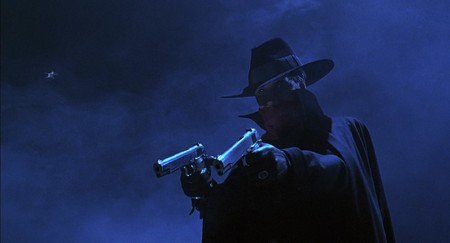 Things start going wrong with the opening scenes in Tibet, where the Shadow is known as “Ying-Ko” (a title used for him in the novels when he’s working in Chinatown). Why the Tulku thinks this murderer is worth training as a hero never gets explained, and Ying-Ko’s fight with an angry flying knife known as “Phubra” is an unfortunate introduction to the shabby CGI in the film. The sequence ends in the worst way possible: a text crawl that leaps over seven years with boring hand waving. Fortunately, The Shadow improves after this, but the wounds never fully heal.
Things start going wrong with the opening scenes in Tibet, where the Shadow is known as “Ying-Ko” (a title used for him in the novels when he’s working in Chinatown). Why the Tulku thinks this murderer is worth training as a hero never gets explained, and Ying-Ko’s fight with an angry flying knife known as “Phubra” is an unfortunate introduction to the shabby CGI in the film. The sequence ends in the worst way possible: a text crawl that leaps over seven years with boring hand waving. Fortunately, The Shadow improves after this, but the wounds never fully heal.
The scene after the prologue is where the movie should have started. Taken right from the pages of the first Shadow adventure, The Living Shadow (1931), the hero saves Dr. Roy Tam from gangsters on a fog-shrouded New York bridge, then recruits the man as one of his web of agents. The staging and atmosphere here are the purest example of the Shadow in action. Such quality will re-appear throughout the running time, but not enough to raise the film much above being average.
Alec Baldwin, in his brief period of dramatic leading man status before he became a brilliant comedic and character actor, is an understandable bit of miscasting. He has the suave handsome look for a 1930s hero (and would have made a good Batman, by the way), but his skill at playing light and charming only works when he’s Lamont Cranston. As the Shadow, he’s too soft, and his laugh and intimidating vocal attacks are weak, even with post-production tampering.
Aggravating the problem is a handful of awful quips the script puts in the Shadow’s mouth that have no place there. After slamming a Mongolian warrior onto his back, the Shadow says, “Next time, you get to be on top.” Oh, hell no! When confronting Shiwan Khan about his plan to crush America, the Shadow retorts, “Hey, that’s the US-of-A you’re talking about, pal.” No, no, no! David Koepp seems to have confused his tough guys and decided the Shadow was Mike Hammer mixed with James Bond, only nowhere near as interesting as that sounds.
When dressed in full Shadow regalia, Baldwin wears a clumsy make-up prosthetic to give him the famous hatchet nose of the character from the pulp covers. Apparently, this is a manifestation of his “dark heart,” which makes no sense as he’s acting heroic in these scenes. It looks awful and damages Baldwin’s performance in the action sequences, which are otherwise well executed.
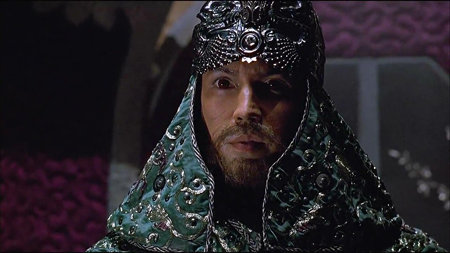 Although I like Alec Baldwin’s performance in the Cranston persona, many of these scenes have him across from Penelope Ann Miller, who is completely out-of-tune as heroine Margo Lane. (The character was created for the radio show and later introduced into the magazine, much to fan dismay. Interestingly, the movie uses Gibson’s preferred phonetic spelling “Margo” to the radio scripts’ “Margot.”) The character isn’t written as a vapid society woman, but that’s how Miller plays her, and Lane ends up as a vacuum: requisite love interest for a character who requires no love interest, and somebody to dress in the swell high-fashion of the 1930s. Bob Ringwood’s costumes for all the characters are sumptuous, but Margo Lane gets the star treatment in her various gowns. It’s expected yet still disappointing that the film did not get nominated for Best Costumes at Academy Award time. Also in Margo Lane’s favor: she doesn’t end up as a damsel-in-distress requiring rescue during the finale.
Although I like Alec Baldwin’s performance in the Cranston persona, many of these scenes have him across from Penelope Ann Miller, who is completely out-of-tune as heroine Margo Lane. (The character was created for the radio show and later introduced into the magazine, much to fan dismay. Interestingly, the movie uses Gibson’s preferred phonetic spelling “Margo” to the radio scripts’ “Margot.”) The character isn’t written as a vapid society woman, but that’s how Miller plays her, and Lane ends up as a vacuum: requisite love interest for a character who requires no love interest, and somebody to dress in the swell high-fashion of the 1930s. Bob Ringwood’s costumes for all the characters are sumptuous, but Margo Lane gets the star treatment in her various gowns. It’s expected yet still disappointing that the film did not get nominated for Best Costumes at Academy Award time. Also in Margo Lane’s favor: she doesn’t end up as a damsel-in-distress requiring rescue during the finale.
The Shadow may have the victory over would-be conqueror Shiwan Khan, but actor John Lone (Iceman, Year of the Dragon) has the true victory with his performance as the main villain. Lone had the difficult task of taking on a character originally molded in the “Yellow Peril” stereotypes of the pulps. Although the script tries to get away from Fu-Manchu clichés, it is Lone’s performances that elevates the material. He delivers his evil speeches with whimsical aplomb that occasionally lapses into his interest in fashion and modern New York:
SHIWAN KHAN: In three days, the entire world will hear my roar and willingly fall subject to the lost empire of Sianking. [Pause] That is a lovely tie, by the way. May I ask where you acquired it?
THE SHADOW: Brooks Brothers.
SHIWAN KHAN: Is that Midtown?
THE SHADOW: Forty-fifth and Madison.
Indeed, the next time we see Shiwan Khan, he’s dressed to the nines in a Brooks Brothers’ suit with an identical tie. And does John Lone ever kill it in a designer suit. This is the sort of comedy that the movie should have. (But, again, the Shadow should not be acting so casual in this confrontation. It’s a great scene for John Lone, not Alec Baldwin.)
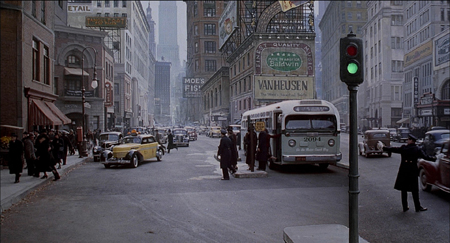 Put John Lone in the “What Works” category, to which we can add Tim Curry as Shiwan Khan’s smarmy cohort in the War Department, Farley Claymore. Eventually Curry gets to turn on the full lunacy that the actor is so expertly equipped to perform. You might expect to find Ian McKellen in the “What Works” column, but the English actor is underused in the bland part of Dr. Reinhardt Lane, the atomic scientist working on the beryllium sphere Shiwan Khan needs for his blackmail plan. This was before Hollywood understood the full extent of McKellen’s talents.
Put John Lone in the “What Works” category, to which we can add Tim Curry as Shiwan Khan’s smarmy cohort in the War Department, Farley Claymore. Eventually Curry gets to turn on the full lunacy that the actor is so expertly equipped to perform. You might expect to find Ian McKellen in the “What Works” column, but the English actor is underused in the bland part of Dr. Reinhardt Lane, the atomic scientist working on the beryllium sphere Shiwan Khan needs for his blackmail plan. This was before Hollywood understood the full extent of McKellen’s talents.
The boldest checkmark in the “What Works” column is the film’s visual design. The Shadow is one of the finest looking of the stylized adventures of the 1990s. All levels of the production are top-flight: Joseph Nemec III’s sets, Stephen H. Burum’s pop-noir photography, Bob Ringwood’s period costumes, and all the practical special effects. The computer graphics are terrible, as was frequently the case in the mid-’90s unless you were Spielberg or Cameron, but the matte paintings of New York and the sprawling miniatures that let the camera swoop through them like a fantasy landscape remain impressive.
The numerous epic sets are what will strike viewers the most, particularly the swank-in-silver Cobalt Club and Shiwan Khan’s lair inside the Art Deco Monolith Hotel where the film has a darn exciting finale, climaxing in an homage to The Lady from Shanghai. The hotel’s mix of Mongol patterns and the Chrysler building is a heady thing to behold. Taken together, the visuals of The Shadow manufacture the idealized New York we all imagine from the golden days of the pulps.
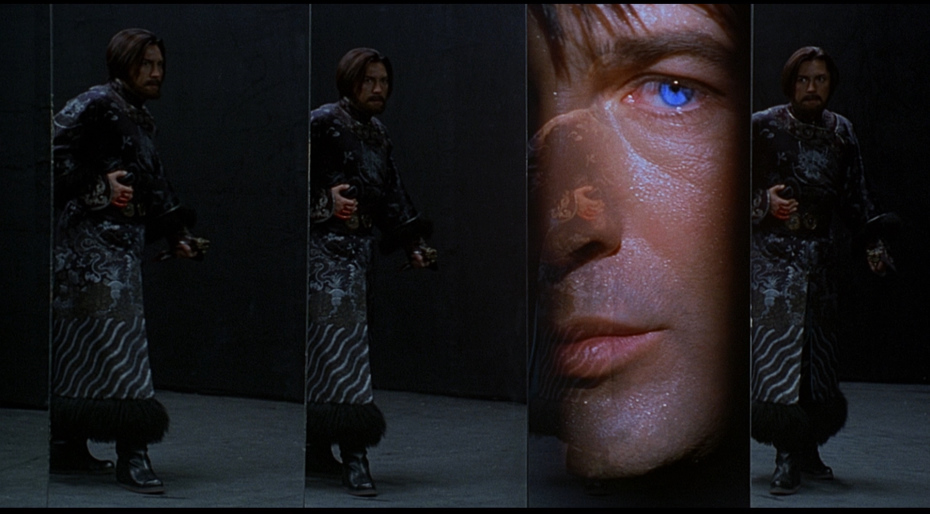 The reveal of the Monolith Hotel, which Shiwan Khan hides through hypnotizing the entire city into believing it’s a vacant lot, is the movie’s best moment, something that feels like the astonishing revelations Walter Gibson placed throughout his stories. The camera tilts up as this Art Deco Tower of Babel warps into existence, accompanied by Jerry Goldsmith’s swooping and sinister tones. The film needs more of this majesty and fewer comedic distractions like security guards arguing about whether they should get a burger or a pizza and Jonathan Winters hamming it up as the useless police commissioner Wainright Barth.
The reveal of the Monolith Hotel, which Shiwan Khan hides through hypnotizing the entire city into believing it’s a vacant lot, is the movie’s best moment, something that feels like the astonishing revelations Walter Gibson placed throughout his stories. The camera tilts up as this Art Deco Tower of Babel warps into existence, accompanied by Jerry Goldsmith’s swooping and sinister tones. The film needs more of this majesty and fewer comedic distractions like security guards arguing about whether they should get a burger or a pizza and Jonathan Winters hamming it up as the useless police commissioner Wainright Barth.
Of course, I had to mention Jerry Goldsmith, given that he’s my favorite composer in any style of music. His score for The Shadow is one of the lengthiest of his career and full of complex ideas that don’t immediately reveal themselves. When I first saw the film, I thought the score a bit disappointing, but this is an aspect of The Shadow that has improved over time. The score relies on two major themes: a darkly heroic piece for the Shadow that captures the character far better than the movie does, and Shiwan Khan’s theme that often explodes with ethnic percussion. Weaving through the score is a pitch bend to represent mental powers, and the variant of this is what heralds the appearance of the Monolith Hotel. The end credits feature an outrageous but hilarious Jim Steinman composition, “Original Sin,” sung with campy bravura by Taylor Dane. Ostensibly a terrible choice for the movie, “Original Sin” is a bit of over-the-top camp that actually works. Still, it should’ve been Goldsmith’s music here.
Australian-born director Russell Mulcahy had an extensive background in music videos in the early ‘80s, including MTV’s very first video, the Buggles’ “Video Killed the Radio Star.” In film he is best known for Highlander, and worst known for Highlander II: The Quickening. His film-directing career after The Shadow dropped to smaller projects and television movies, with his highest-profile assignment coming in 2007 with the marginally-better-than-the-rest Resident Evil: Extinction. Mulcahy has a good handle on the action in The Shadow, and I can’t fault most of what he achieves when the script and story give him the space to explore the noir aspects of the Shadow’s world.
(Anyone with an interest in Mulcahy’s career should take a look at his second feature, 1984’s Razorback, an Australian Outback take on Jaws with a giant pig. It’s available on MOD DVD from Warner Archive, and despite the goofy premise, it’s a legitimately good movie.)
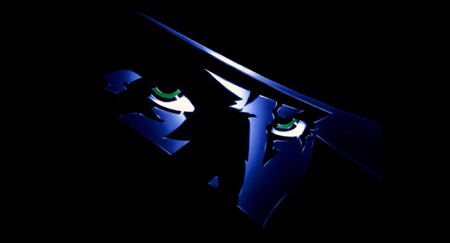 The Shadow comes to Blu-ray from Universal Studios Home Entertainment … a prospect that will bring thoughts of evil to the hearts of Blu-ray enthusiasts. The company has a bitter fruit reputation for poor transfers of their catalog titles, unless they’re something like Jaws or the Universal Monsters. Bluray.com called this transfer “an unholy abomination from a bygone era.” I think I’d call it an average, serviceable transfer considering it comes from Universal. There are occasional, but quite noticeable, compression artifacts and an obvious telecine wobble on the opening credits. Edge enhancement has artificially upped the sharpness, but this doesn’t drive me crazy the way it does some videophiles. The black levels are strong, which is important for a film that spends so much time in the shadows. (Of course.) But the best aspect of the image is that the film is finally available in its original aspect ratio of 1.85:1. Toss away those cropped DVDs.
The Shadow comes to Blu-ray from Universal Studios Home Entertainment … a prospect that will bring thoughts of evil to the hearts of Blu-ray enthusiasts. The company has a bitter fruit reputation for poor transfers of their catalog titles, unless they’re something like Jaws or the Universal Monsters. Bluray.com called this transfer “an unholy abomination from a bygone era.” I think I’d call it an average, serviceable transfer considering it comes from Universal. There are occasional, but quite noticeable, compression artifacts and an obvious telecine wobble on the opening credits. Edge enhancement has artificially upped the sharpness, but this doesn’t drive me crazy the way it does some videophiles. The black levels are strong, which is important for a film that spends so much time in the shadows. (Of course.) But the best aspect of the image is that the film is finally available in its original aspect ratio of 1.85:1. Toss away those cropped DVDs.
The sound mix is where the disc excels beyond Universal’s standards: The Shadow was released in theaters in a DTS digital surround mix, one of the earliest. The original sound transfers ideally to the DTS Master Audio track on the disc, with great use of the back speakers for gunfire and the Shadow throwing his voice. There are no extras and no main menu; the feature starts to play after the disc is inserted, and the pop-up menu button is required to access the subtitle and audio options.
A major caution for The Shadow disc is that Shout! Factory has announced plans for their own Blu-ray release of the film at an unidentified time. It will have extras on it, but nothing else is known about it at this time. Fans of the film may wish to hold off purchasing the Universal disc to see what Shout! Factory can produce, and the label has a strong history with catalog titles. Personally, I’m satisfied with the current disc and have no plans to double-dip; I may be a fan of the the Shadow, but I’m not a big enough fan of his movie.
The Shadow isn’t a failure in the end, and didn’t deserve the fate it suffered at the box office. But with so much visual splendor available to it and a top-tier villain, it’s disappointing to see it under-serve its hero and create something ordinary. The weed of the Hollywood assembly line bears bitter fruit. Unfortunately, The Shadow knows.
Ryan Harvey is a veteran blogger for Black Gate and an award-winning science-fiction and fantasy author who knows Godzilla personally. He received the Writers of the Future Award in 2011 for his short story “An Acolyte of Black Spires,” and his story “The Sorrowless Thief” appears in Black Gate online fiction. Both take place in his science fantasy world of Ahn-Tarqa. A further Ahn-Tarqa adventure, “Farewell to Tyrn”, the prologue to the upcoming novel Turn Over the Moon, is currently available as an e-book. You can keep up with him at his website, www.RyanHarveyWriter.com, and follow him on Twitter.
When the movie first came out, I loved it. Rewatching it on VHS a few times made it seem less impressive, made the flaws more obvious but it was still enjoyable. then several years ago that recording surfaced of Alec Baldwin calling his daughter various rude names. Ever since then ,the sight of Baldwin makes my skin crawl. I just can not watch anything of his anymore.
Considering how much Hollywood currently loves remaking, relaunching, and reimagining classic characters I’m sure within a few years will have a new Shadow movie. Hopefully it will be a good one.
I have the laser disc version of The Shadow (And I still have a Pioneer laser disc player that actually functions). I enjoyed it and thought Mulcahy did a nice job bringing The Shadow to the screen. Baldwin did a fair job of portraying the slouch-hatted crime fighter, despite his artificial-looking proboscis. I’ve never seen him in anything else that I liked. But if there ever is a remake of The Shadow, hands down the best actor currently working who could totally nail the character is Adrien Brody. He’s ready made for it— no make up necessary.
But Koepp’s script falters when he departs from both the pulps and the radio: he re-wrote the Shadow’s character to create a more contemporary view of a fallen man who struggles to become a hero.
=======================================
Intriguing to note how many adaptations of pulp or comic book heroes or other previously established properties since 1994’s The Shadow have used that idea. They revise the hero’s origin with him/her as a selfish person who fights the way to redemption, regardless of how accurately that reflects prior origin tales. I cannot recall a previous such adaptation that had gone this route prior to 1994-Superman did not, Doc Savage did not, none of the Zorro films did, The Legend of the Lone Ranger did not, etc..
However, since 1994, numerous adaptations have followed this idea. As Greg Hatcher said about the recent Solomon Kane film, “a guy who starts as a jerk that has to fight his way through to redemption………..is apparently the only origin modern movie people know how to tell any more. (See Daredevil, Iron Man, Batman Begins, Elektra, [The Saint, Green Lantern] and so on and so on.)
http://www.shadowsanctum.net/interactive/tidbits_archive/shadow_batman-movie_comparisons.html
I will note that aspects of Moon Knight and Doctor Strange’s origins follow this selfish individual redeeming himself. The Shadow did serve as an influence on Moon Knight, so intriguing that Koepp’s revised origin of the Shadow mimics to a degree the backstory of Moon Knight.
As Greg Hatcher said about Solomon Kane, and as I said as well. The Shadow, like Solomon Kane, needs no origin story at all.
[…] The Shadow on Blu-ray […]